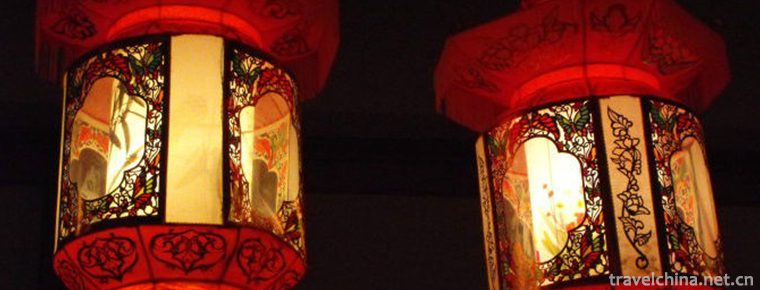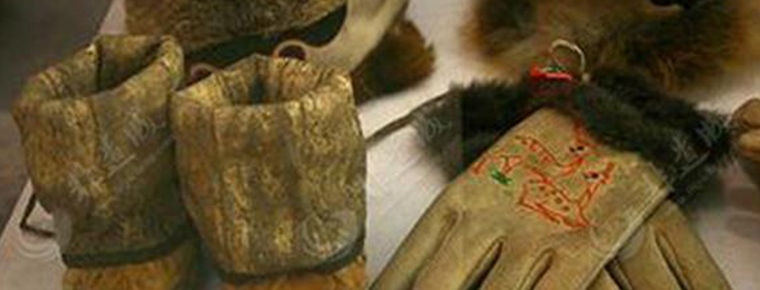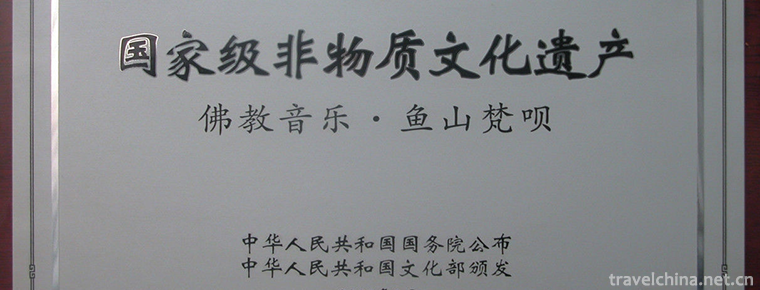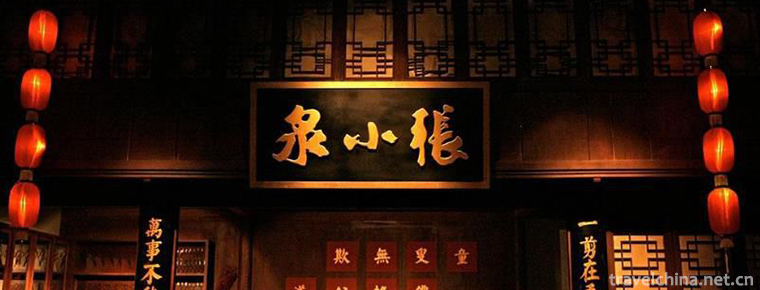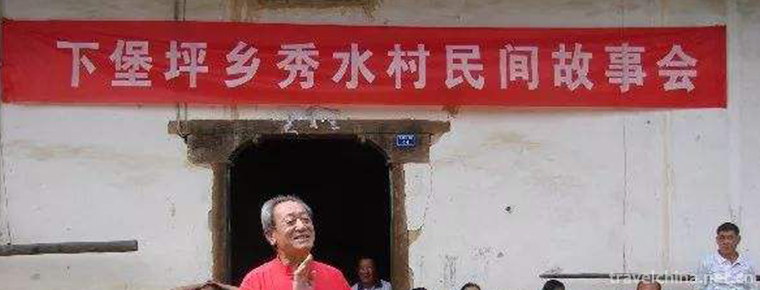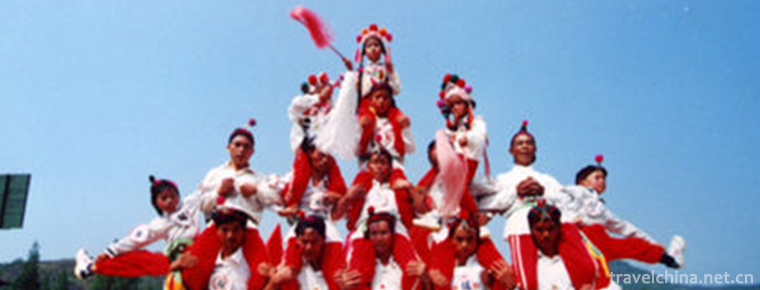Xixi Wetland Tourist Area
Xixi Wetland Tourist Area
Xixi National Wetland Park is located in the west of Hangzhou City, Zhejiang Province. It is only 6 kilometers away from Wulin Gate, the main city of Hangzhou, and 5 kilometers away from West Lake.
The total area of Xixi National Wetland Park is about 11.5 square kilometers, which is divided into the eastern wetland ecological protection and cultivation area, the central wetland ecological tourism leisure area and the Western wetland ecological landscape enclosure area.
Xixi National Wetland Park is a national wetland park which integrates urban wetland, farming wetland and cultural wetland. On November 03, 2009, it was listed in the list of important wetlands in the world. On January 10, 2012, it was awarded the National AAAAA Tourist Scenic Spot. In December 2017, it was selected as the national practical education base for primary and secondary school students.
Historical evolution
Ancient prototype
Four or five thousand years ago, Xixi's low-humid land was flooded by spring and summer floods in Tianmu Mountains, where it became a lake, and wetlands appeared when it was dry. Wetland is a phenomenon that occurs with its appearance, so it can be called embryonic stage. From the first year of Xiping in the Eastern Han Dynasty (172) when the South Lake was built, to the end of the Tang Dynasty and the Five Dynasties, there was about a thousand years, which was the formation period of Xixi Wetland.
Development of song and Yuan Dynasties
In the Song and Yuan Dynasties, in the first year of Duangong (988), the court officially built Xixi Town here. This is the beginning of the new stage of Xixi, which also shows that Xixi is an ancient town for thousands of years. During the Ming and Qing Dynasties, social economy and culture on both sides of Xixi River made progress in many aspects. Agricultural and sideline industries such as fish raising, silkworm breeding, bamboo planting, bamboo shooting, tea, fruit and vegetable were developed, which became the characteristics of suburban agriculture.
Atrophy of Republic of China
After the Republic of China, wetlands were shrinking day by day. By the 1950s, with the establishment of many towns in Xixi area and the development of factories and enterprises, the scope of Xixi wetland was gradually reduced.
Development and transformation
In 2003, the Hangzhou Municipal Committee and the Municipal Government began to protect Xixi Wetland comprehensively.
In 2005, Xixi Wetland was built and officially opened, and approved by the State Forestry Administration as the first national wetland park.
In 2006, Xixi Wetland started the second phase of comprehensive protection project.
In 2007, the second phase of Xixi Wetland was limited to open gardens, and the third phase of Xixi Wetland Project started construction.
In September 2008, the third phase of Xixi Wetland Comprehensive Protection Project was limited.
geographical environment
Location context
Xixi National Wetland Park is located in the west of Hangzhou City, Zhejiang Province. It spans two districts: West Lake District and Yuhang District. It is only 6 kilometers away from Wulin Gate, the main city of Hangzhou, and 5 kilometers away from West Lake. The total area of the park is about 11.5 square kilometers.
Geology and geomorphology
The river of Xixi National Wetland Park is more than 100 kilometers long, and about 70% of the area is river harbor, pond, Lake ripple, swamp and other waters, among which the waterways such as lanes, braides such as nets, fish ponds and islands are scattered; the land greening rate is over 85%, and the main soil types are red soil, lithologic soil and paddy soil, among which red soil and paddy soil are the most widely distributed.
climate
Xixi National Wetland Park is a subtropical monsoon climate, with an average annual temperature of 15.17 C, an average annual relative humidity of 78%, an average annual precipitation of 1399 mm, mild climate, abundant rainfall, long sunshine and distinct seasons.
natural resources
Animal resources
insect
There are 480 species of insect specimens in Xixi National Wetland Park, belonging to 15 orders, 133 families and 417 genera. Lepidoptera has the largest number of species, and the other orders are Coleoptera, Hemiptera, Dragonflies, Homoptera, Hymenoptera, Orthoptera, Diptera, Isoptera, Neuroptera, Mantidae, Cockroaches, Dermatoptera, Bamboo Arthroptera and Cockroaches. There are 34 families of Lepidoptera, the most abundant of which are Plutellae (28 species), Noctuidae (25 species), Hymenopteridae (13 species) and Dendrolimidae (13 species), which are the dominant families in Lepidoptera. The other main dominant families are Dragonflies: Dragonflies (11 species); Coleoptera: Cerambycidae (15 species), Leafbeetles (14 species), Ladybugs (10 species).
Amphibian
There are 10 species of amphibians in Xixi National Wetland Park, belonging to 1 order, 4 families and 10 species, i.e. Bufo bufo, water frog playing piano, Zelu frog, black spot side fold frog, golden thread side fold frog, Zhenhai forest frog, zebra leg tree frog, big tree frog, small arc front frog and ornamental frog. There are 3 species of Palaearctic and 7 species of Oriental, including 3 species of Central China and 4 species of South China. Among the 10 amphibian species recorded, the big tree frog belongs to the rare species in Xixi Wetland, and its number is rare. It belongs to the key protected animals in Zhejiang Province. The water frog, the black spot side fold frog, the zebra tree frog, the Zhenhai forest frog and the small arc spotted frog have a certain number and belong to the rare species, while the Chinese toad, the Zelu frog, the golden thread side fold frog and the ornamental spotted spotted bladder frog are common species. It is the dominant species of amphibians in Xixi wetland.
Reptiles
There are 15 species of reptiles in Xixi National Wetland Park, which belong to 3 orders, 8 families and 15 species. Among them, the black brow snake belongs to the key protected animals in Zhejiang Province. There are 6 species widely distributed in Palaearctic and Oriental realms, 8 species in Oriental realm, 2 species in Central China and 6 species in South China. Among them, the northern grass lizard, red-spotted brocade snake, black-eyed brocade snake, red-chain Chinese snake and Wushao snake are common species in Xixi wetland, and are the dominant species of reptiles in Xixi wetland; the polywart gecko, lead mountain gecko, Chinese stone dragon, cockroach, red-chain snake, Wang brocade snake and adder are rare species; the Chinese soft-shelled turtle is a rare species.
birds
There are 126 species of birds belonging to 41 families and 15 orders in Xixi National Wetland Park. Among them, there are 8 species of state-level key protected animals, such as lark hawk, sparrow hawk, common gecko, red falcon, swallow falcon, Peregrine falcon, brown-winged crow and spotted ferret. There are 57 species (45.2%) of birds in Xixi National Wetland Park, 29 species (23%) of summer and winter migrants, and 11 species (8.8%) of travelling birds. Among them, 28 species (22.2%) are wetland waterfowls, of which 1 species belongs to Geranidae, 10 species belong to Heronidae, 3 species belong to Ducks, 5 species belong to Yangjinkiae, 1 species belong to Pheasant, 4 species belong to Iridae and 4 species belong to Kingfisheries.
Mammals
There are 14 species of mammals in Xixi National Wetland Park, belonging to 5 orders, 7 families and 14 species. They are Hedgehog, Big Skunk, Musk Musk, East Asia Wing, Yellow Weasel, Badger, Badger, Badger, Red-bellied Squirrel, Apodemus agrarius, Rattus flavipectus and South China Rabbit.*
fish
There are 45 species of fish in Xixi National Wetland Park, belonging to 6 orders, 14 families and 35 genera, of which 10 species are cultured. Among all the fishes, Cyprinidae has the most species, with 30 species, accounting for 66.7% of the total. There are 8 species of perch, accounting for 17.8% of the total. Again, the catfish orders were 4 species, accounting for 8.9% of the total. The eels, gilloides and syngilloides were the least, with 1 species each accounting for 2.2% of the total. Among Cyprinidae, there are 28 species of Cyprinidae and 2 species of Loach. Therefore, Cyprinidae is the dominant fish species in Xixi National Wetland Park. In Cyprinidae, Cyprinidae is the dominant species, while Loach is the least.
plant resources
There are 254 species of vascular plants in Xixi wetland, belonging to 204 genera and 91 families. Among them, ferns are 8 families, 9 genera and 9 species; gymnosperms are 4 families, 6 genera and 7 species; dicotyledons are 67 families, 146 genera and 184 species; monocotyledons are 12 families, 43 genera and 54 species. Gramineae, Compositae, Leguminosae and Rosaceae are the main families. Plant species are rich and varied, but lack of endemic genera and species. Common are setaria, pennisetum, bermudagrass, Achyranthes bidentata, persimmon, Park, Zaoyuan bamboo, Haizhou Changshan, honeysuckle, wild rose, azedarach, tree-building and so on.
Scenic spots
Xixi National Wetland Park has "three dikes and ten sceneries". The three dikes are Fudi, Green dike and Shoudi. The ten sceneries are autumn snow, persimmon reflecting wave, Dragon Boat winning meeting, lotus beach heron shadow, Hongyuan lingyun, Jianjiao Panyue, fishing village smoke and rain, Qushui plum hunting, Gaozhuang morning track and Hezhu music.
Fudi
Fudi is 2300 meters long, 7 meters wide and covers an area of about 0.8 square kilometers. It is located in the west of Jiangcun Port and the east of Shentankou Port. It connects Tianmushan Road in the South and Erwen Road in the north. It runs through the whole Xixi National Wetland Park from south to north. It is a long cultural dike with ecological tone and popular science characteristics. Along the way, it connects Gaozhuang, Jiaoluan, Qushui, Hezhu Street, Hongzhongbieye and other Xixi Phase II. The main scenic spots are strung with six "Fu" bridges, named Yuanfu Bridge, Yongfu Bridge, Qingfu Bridge, Xiangfu Bridge, Guangfu Bridge and Quanfu Bridge.
Road In The Green
Green dyke is a long East-West dyke, 1600 meters long and 7 meters wide. There are many fish ponds on both sides. There are abundant vegetation on the foundation of the fish pond. The ecological environment is good and the landscape is beautiful. In the eastern part of the green dyke and the area adjacent to the city, Xixi Wetland Botanical Garden, a "one zone, four zones" - Green dyke Wetland Plant Community Exhibition Zone and Baojiaduo Aquatic Plant Community Exhibition Zone, West Aquatic Garden Exhibition Zone, East Aquatic Garden Exhibition Zone and Wetland Economic Plant Exhibition Zone are located. Green dike passes through the core protection area of Xixi River. From West to east, it links up the wetland ecological botanical garden and the main scientific and technological popularization projects of wetland ecology. It is an ecological dike of Xixi River.
Longevity embankment
During the third stage of Xixi Wetland, Shoudi is parallel to Wuchanggang, with a north-south direction. It is about 3600 meters long and 4.5 meters wide. It is the longest dike in Xixi Wetland. From south to Wuchang Avenue Wetland Phase III entrance, from north to Wenerxi Road south side of the water bus terminal, cross-strait crisscrossing waters, a hundred years of tree wharf, forming a natural ecological landscape. The beautiful scenery of Xixi River such as dragon tongue ring green, Cihang sender, Dragon Boat Winning Club, Hongyuan Yinxiu, Man Gang seeking seclusion, Bridge Pavilion Simu, persimmon forest autumn, village pastoral etc. will be Beaded into a chain.
Poke
Po Ying is located in the south of Qiu Xue'an, the manor of Zou Xiaozhi, a famous teacher in Qiantang in the late Ming and early Qing Dynasties. Reed bushes, wild and interesting, looking from a high place, the whole manor is like a Fairy Island moored on the water, so it gets its name. The two groups of buildings, Ziyitang and Kongmingxuan, echo before and after Dahuahua, and form three spaces from south to North respectively.
Smoke and Water Village
Yanshui Fishery Farm is located in the south of Yanshui Ancient. It is the center of Xixi Agricultural and Fishery Culture Exhibition, tourist leisure and catering. Drawing on the poetry artistic conception of the Qing Dynasty scholar Chen Wenshu's "Autumn Snow Fishing Village", it takes the magic of three smokes: willow smoke, cooking smoke and water smoke, so it gets its name. This scenic spot has exhibition halls such as silk stories of mulberry and silk, marriage folklore, Xixi family, etc. It shows the local characteristics of Shuixiang folk houses and the simple farming culture of residents.
Deep pool mouth
Shentan Port is also known as Shentan Port. According to Nanzhangzi, it is recorded that "Shentan Port is not a boat crossing; it is unfathomable when there is a dragon in it." Therefore, it is named Xixi's main folk culture exhibition center. Xixi Dragon Boat Winning Club is doing this every year.
River Street
Hezhu is an ancient place name of Xixi Wetland in Hangzhou. In the northeast of Xixi Wetland National Park, the main entrance is Fudi of Xixi Wetland, about 400 meters away from Fudiwen Road entrance of Xixi Wetland. Hezhu is an ancient place name of Xixi Wetland, in the northeast of Xixi. The restored Hezhu Street is a folk commercial street which integrates leisure, business fair and sightseeing tourism. It shows the unique folk culture and products of Xixi. We can buy tea in teahouses, buy local specialties such as Xixi small flower basket, blue print cloth, Xixi rice wine, cakes, Gudang Panshi, bamboo shoots, Xixi fish products, etc. At Jiang Xianggong ancestral hall, we can watch the three brothers of Jiang who are relieving poverty and benevolent to charity, enjoy the performance of Yue Opera at the ancient stage, visit the development history of Xixi Dragon Boat the Dragon Boat Exhibition Hall, and appreciate the craftsmen's Dragon Boat sculpture and model making.
Hong Zhong bells
Hongzhong Biye is located near Gaozhuang. During Chenghua Period of Ming Dynasty, Hongzhong, Shangshu of the Ministry of Punishment, retired and returned home in his later years, built another business in Xixi. Other industries are composed of houses (Sanrui Tang, returning home, Xiangxuetang, Qinfang Building, etc.) and academies (Zhuqing Shanfang, Qingping Shantang, Luoyin Pavilion, Baoyuexuan, etc.).
Gao Zhuang
Gaozhuang, also known as Xixi Villa, is commonly known as Xizhuang. Founded between the 14th year of Shunzhi (1657) and the 3rd year of Kangxi (1664) in the Qing Dynasty, Gao Shiqi (1645-1704), a literati in the Qing Dynasty, is a special villa with typical characteristics of official residence in the back and back gardens around the late Ming and mid-Qing Dynasties. The village is composed of tall houses, bamboo windows, twisted flower bookstores, Tongyin Hall and Jiaoyuan Poetry Club.
Mei bamboo Villa
Meizhu Villa is a special estate of Zhang Kui, a literati in Qiantang, Qing Dynasty (about 1777-1857). He planted a large number of plum blossoms and emerald bamboo outside the villa. It has noble human nature and is better than Meizhu. It is also good at reading and painting. It often invites friends to sing poems and painting here, so it gets its name. Meizhu Villa is mainly composed of three main buildings: Meizhu Wulu, Xuanhui Hall and Xuge Pavilion, which are the main plum appreciation areas in Xixi.
Xixi Mei Shu
Situated in the southeastern part of the park, Xixi Meivilla is adjacent to the "Autumn Snow Temple" reserve in the essence area of Xixi. It is an idyllic farmhouse style building, mainly including Xixi Meiville, Xiangxue House, Tanchun Pavilion and Gongshan Xiaozhu. The main building is wooden plank, Adobe wall; the roof is suspended on the top of the hill, the height is different, and the shape varies. Scenic spots take pastoral farmhouse as the carrier, plum culture as the connotation, and broad-minded and far-reaching environmental beauty as the characteristics. They are the main plum appreciation areas in Xixi.
Xixi Water Pavilion
Situated in the Meizhu leisure area of Xixi, Xixi Water Pavilion is a group of other literati-style buildings built near the water. It is a place where ancient literati and ink-writers lived in seclusion and collected books in Xixi. Shuige is composed of two groups of buildings, one is the "Bookshop" in the East and the other is the "Blue Creek Bookshop" in the west. The walls of Shuige are rammed earth walls at the lower part and bamboo and mud walls with exposed beams at the upper part.
Autumn snow Hall
Located in the most enthusiastic waters of Xixi River Zhu Wetland, Qiuxue Ancient was first named "Dasheng Ancient" in Song Chunxi (1174-1189). At the end of Ming Dynasty, the Shen brothers in Xixi rebuilt their buildings, and extended the residence of famous monks in the temple. At the end of Ming Dynasty, Chen Jiru took the poetic title of "Autumn Snow Monk Fishing Boat" from the Tang Dynasty as "Autumn Snow Monk". Zhou Qingyun, a renovated scholar in Nanxun during the Republic of China, is a national poetry research base and one of the important temples in Xixi. Autumn Snow Temple is the layout structure of two-entry courtyard, the first building in the courtyard takes Buddhist culture as the main function; the second building in the courtyard to the early years of the Republic of China has two Zhejiang Ci ancestral halls, offering a list of more than 1000 Ci poets, paved with stone pavement in front of the door.
Lotus Beach Bird Watching Area
The Lotus Beach Bird Watching Area is located in the Lotus Beach area with an area of about 35 hectares. The whole water area is shallow, and the part is deep water area. There are dense aquatic plants, which are suitable for wading birds. The bird-watching area is full of islands, walkways and woodlands. It is the main habitat of wading birds in Xixi wetland and the main ornamental area of wading birds in Xixi.
Hangzhou Wetland Botanical Garden
Hangzhou Wetland Botanical Garden covers an area of about 55 hectares and has four main halls, namely, Preface Hall, Wetland and Human Hall, China Hall and Xixi Hall. It shows the wetland plants in the ecological diversity of Xixi's characteristic pond system, rivers, beaches and zhuzhou. Its contents include the collection, cultivation and exhibition of aquatic and wetland plants, leisure tour, popular scientific research and education, and aquatic plants throughout the country. Planting demonstration and introduction breeding.
ecological value
Xixi wetland is an important part of Hangzhou green space ecosystem. Wetland can regulate the atmospheric environment, rich animal and plant communities in the wetland can absorb a large amount of carbon dioxide and emit oxygen. At the same time, it can absorb harmful gases to purify the air, cope with urban air pollution, and provide sufficient water source and good climate conditions for the city.
Xixi wetland is also a typical diversified ecosystem. Its complex and diverse plant communities provide good habitats for wildlife. It is a breeding, habitat, migration and wintering place for birds and amphibians, and plays an important role in improving urban species diversity.
Tourism information
line
Rollerboat Cruise
A. Travel routes within the scope of Phase I
Zhoujiacun, Meizhu Villa, Autumn Snow Temple, Yanshui Fishing Village, Shentan Kou
Travel routes within the scope of Phase B and Phase II
Hezhu Street and Jiangcun Fair
Shipping Points: Zhoujiacun Main Wharf and Hezhujie Wharf
Rolling boat price: 100 yuan/hour/boat (6 persons/boat, including children)
Battery boat cruise
Zhoujiacun through Baijiayao Yanshui Fishing Farm through the sunset ecological restoration area to Shentan Kou
Through Autumn Snow Temple, Xixi Meishu, Xixi Shuige to Yinlu Tianzhuang along the mountains and rivers back to Zhoujiacun
Ticket Points: Tickets are available at all terminals
Stops along the way: Zhoujiacun, Yanshui Fishery Farm, Shentan Kou, Xixi Meivilla (only during the Mei Festival, and only for tourists to dock, do not provide passenger boarding services), Yinlu Grange
Battery boat price: 60 yuan per person
Land Walking Route
The entrance and exit of Zhoujiacun entrance and exit of Zhoujiacun Village Meizhu villa nununun Baijiababababababababababao Yanshshuifisherierierierierieries via Xiaoguqiao bridge) deep pool mouth River streets Jiangcun market Fudi Hangzhou Wetland Botangarden Hangzhou wetland botangarden (from green embankment to Fudi) Hong Zhong industry Lihang Second Temple Temple QuQuQuQushui An Lutianzhuang Xixi Shuige Xixi Meivilla Xixi Caotang Zhou Jiacun Entrance and exit (about 16 km)
Battery Car Tour Line
A. Gaozhuang - Hezhu Street (Roundtrip)
B. Gaozhuang - Wetland Museum (Roundtrip)
Location: Location of battery car in Fudi South and Hezhu Street
Battery car price: 5 yuan/person/time
Ship, Walk and Vehicle Integrated Tour Line
Zhoujiacun Main Wharf (by battery boat or charter boat)Yanshui Fishing Village_Shentan Kou (on foot)Hezhu Street_Jiangcun Fair_South entrance and exit of Fudi
Ticket Price
Adult Ticket: 80 yuan / Adult Ticket for Battery Boat: 60 people
Half-price ticket: 40 yuan / person battery boat half-price ticket: 30 yuan / person
IC card ticket: 10 yuan per person
Opening Hours
Peak season: April 1-October 31 each year
Park opening and closing time: 8:30-17:30 (park 16:30 closed doors, tickets, visitors are not allowed to enter the park)
Off-season: 1 November to 31 March
The opening and closing time of the park is 8:30-17:00 (the park is closed at 16:00, tickets are not allowed for tourists)
Traffic Information
Bus routes
K506: North of Wulin Gate - Xixi National Wetland Park - Yuhang
K193: Huanglong Bus Center Station - Xixi National Wetland Park - Shima
K310: Luojiazhuang - Xixi National Wetland Park - Shima
Y13: Xixi National Wetland Park - Lingyin
Sightseeing Line 1: Huanglong Tourism Distribution Center - Xixi National Wetland Park
Self-driving line
Tourists from Nanjing, Zhenjiang, Wuxi and Huzhou:
Ningxia-Hangzhou Expressway to Xixi West Area - Ningxia-Hangzhou Expressway to the West Round of Hangzhou, around the exit of the 12th Five-Year Plan, down the Touxi Road to the south of 1 kilometer to the Hongyuan entrance of the West District.
Tourists from Shanghai, Suzhou and Jiaxing:
The direction of Shanghai-Hangzhou Expressway is to the west of Xixi - the north of Shanghai-Hangzhou Expressway to the north of Hangzhou Circle, then turn to the west of Hangzhou Circle, and go south one kilometer along Touxi Road around the exit of the 12th Five-Year Plan to the entrance of Hongyuan in the west.
Tourists from Jinhua and Quzhou:
The Hangzhou-Jinzhou-Quzhou Expressway is directed to the west of Xixi District - Hangzhou-Jinzhou-Quzhou Expressway to the south of Hangzhou Circle, then turn around the west of Hangzhou, leave exit around 11B, and go to the downtown direction of Tianmushan Road to Wuchang Avenue, that is, to the entrance of Longjiuzui in the west.
Ningbo and Shaoxing:
Hangyong Expressway is directed to Xixi West District - Shanghai-Hangzhou-Yong Expressway to the North Round of the City, then turn to the West Round of the City, around the 125-Chang Exit, and follow the Touxi Road one kilometer south to the Hongyuan Entrance of the West District.
Huangshan and Linan Directions:
The direction of Hangzhou-Huizhou Expressway is to Xixi West District - Hangzhou-Huizhou Expressway leaves exit around 11B, and goes to Wuchang Avenue in Tianmushan Road downtown direction, that is, to the entrance of Longjiuzui in West District.
Fuyang, Qiandaohu direction:
The direction of Hangqian Expressway is to Xixi West - Hangqian Expressway is to Hangzhou West Round, leaving exit around 11B, and then to Wuchang Avenue in Tianmushan Road downtown direction, that is, to Longjiuzui Entrance in West District.
Private car routes in the main urban area of Hangzhou:
Wen Er West Road to Wuchang Entrance around the city, 1 kilometer straight south along Touxi Road to Hongyuan Entrance of West District, Tianmu Shan Road to Wuchang Avenue to Longjiuzui Entrance of West District. Chengnan can reach Xixi West Area through Wansongling Tunnel, Yuhuangshan Tunnel, Jiuzhishan Tunnel, Wulaofeng Tunnel, Jiqingshan Tunnel and Lingxi Tunnel.
History and Humanities
In Yongzheng's Records of West Lake in Qing Dynasty, Xixi, in the Yin of Mountains in West Hubei Province, travels by the backland of Gemstone Mountain, around Qinting Mountain and along the mountain for eighteen miles, leaving behind for the Song Dynasty. The waterway from the pine yard into the ancient Dang, shallow and narrow streams, not big boats. Since ancient times, it has been called Xixi. Qushui curved ring, mountains around, famous ancient temple, back and forth, and more Rutin Shashu. Xixi has written brilliant and brilliant colorful music movements in history, including 108 temples, more than 60 temples, 18 docks, 18 bridges, 18 famous springs, more than 50 celebrity villas and many celebrity tombs.
According to legend, Xunzi had ploughed in Xixi during the Warring States Period. To the Southern Song Dynasty, Gaozong of Song Dynasty wanted to build the Imperial City here, and then to Fenghuang Mountain, and then to locate the imperial city on this mountain. At that time, the minister played, how to decide Xixi, Zhao conceived for a long time, "Xixi and stay", there is also a "stay" name. Emperors Kangxi and Qianlong of the Qing Dynasty also visited Xixi and left several imperial poems. Scholars, such as Su Shi, Mi Dai, Qin Guan, Tang Yin, Zhang Dai, Li Que, Huang Binhong, Ma Yifu, Yu Dafu, Xu Zhimo, Yu Youren, Xia Chengxi and so on, left behind thousands of ancient poems, calligraphy and paintings of the moxibustion population for Xixi. Shi Nai'an, a Hangzhou native, took Xixi as the background and wrote the famous book Shuihu Zhuan. It also has an ancestral hall for Ci poets from Zhejiang and Zhejiang, which worships Zhang Zhi from Tang Dynasty and 1044 famous Ci poets from the following dynasties.
The "wind, elegance and eulogy" in The Book of Songs can be compared to the natural simplicity of Xixi scenery, the continuous flow of celebrities and refined scholars, and the brilliant stars of folk culture. Dragon Boat Festival is a traditional folk activity in Xixi Wetland of Hangzhou. It began in Tang Dynasty and flourished in Southern Song Dynasty. Its name was imperial seal when Qianlong traveled south of the Yangtze River.
Park Honor
On September 8, 2017, according to the industry standard of "National Wetland Tourism Demonstration Base", 10 national wetland tourism demonstration bases were identified as the first batch by provincial recommendation and expert group evaluation of the National Tourism Resources Planning and Development Quality Assessment Committee.
In December 2017, it was selected as the first batch of national practical education bases for primary and secondary school students.














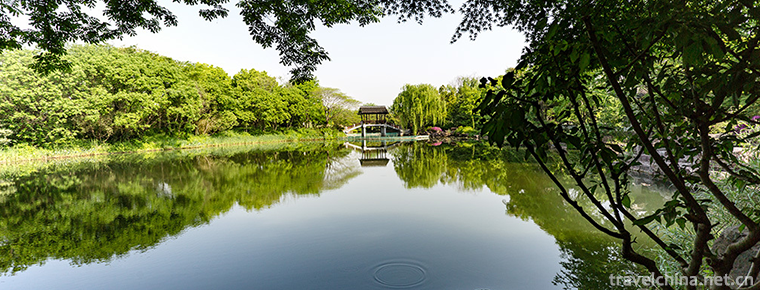
-
Lantern Festival
It is closely related to the folk custom of Lantern appreciation in China. According to textual research, lantern appreciation began in the Western Han Dynasty and flourished in the Sui and Tang Dynas.
Views: 115 Time 2019-04-26 -
Making Skill of Roe Skin of Oroqen Nationality
The Oroqen nationality is one of the minorities with the smallest population in Northeast China. Because of the influence of living environment and customs, people of the Oroqen nationality.
Views: 312 Time 2019-04-28 -
Buddhist music
Buddhist music, the music used by Chinese Buddhist temples and believers in religious ceremonies. Buddhism believes that music has the function of "offering" and "praising Buddha"..
Views: 83 Time 2019-04-29 -
Scissors Forging Technology
Zhang Xiaoquan scissors forging technology, local traditional handicraft in Hangzhou, Zhejiang Province, one of the national intangible cultural heritage..
Views: 131 Time 2019-05-05 -
Lichuan lantern song
Lichuan Lantern Song is a traditional folk dance that originated in Baiyang area of Lichuan City. Many folk songs in Lichuan Lantern Song and the ancient bamboo branch song inherit in one continuous l.
Views: 146 Time 2019-05-13 -
Xiabaoping Folk Stories
There are many original ecological works of Xiabaoping folk tales, which have distinct local characteristics and high cultural taste. It is the epitome of the traditional folk literature in the Three .
Views: 343 Time 2019-07-01 -
Legend of Yin Jifu
The "Yin Jifu Legend" which was listed as the first batch of intangible cultural heritage in Hubei Province, made a sensation forum about "Chinese poetry ancestor, Taishi Yin Jifu of th.
Views: 180 Time 2019-07-13 -
Ying Luohan
Yingluohan is a form of traditional folk entertainment which integrates martial arts and folklore in the traditional festival activities in Jinyun County, Zhejiang Province. This kind of activity also.
Views: 130 Time 2019-07-14 -
Yongxiu Yaya Opera
Yongxiu Ya Opera originated in Wu Town, one of the four famous towns in Jiangxi Province. It was born in the late Ming Dynasty and Ganbei Bench Opera. Because all of its female characters were played .
Views: 193 Time 2019-07-14 -
Longhua Town
The synonym Longhua ancient town generally refers to Longhua town.
Views: 147 Time 2020-10-16 -
Chengdu Yongling Museum
The Royal Museum of Wang Jian, located at No.10 Yongling Road, Jinniu District, Chengdu, covers a total area of 54000 square meters, and is composed of three parts: cultural relics protection area, comprehensive museum and garden protection area..
Views: 122 Time 2020-10-18 -
Nanchong science and technology
In 2019, Nanchong implemented 97 key science and technology plan projects, an increase of 7.8% over that in 2018, including 83 national and provincial science and technology plan projects. It won 11 provincial science and technology progress awards. In the whole year.
Views: 144 Time 2020-12-17
